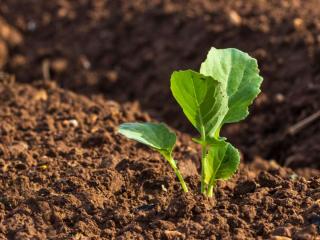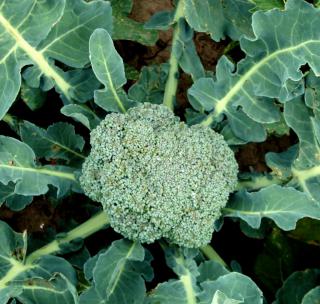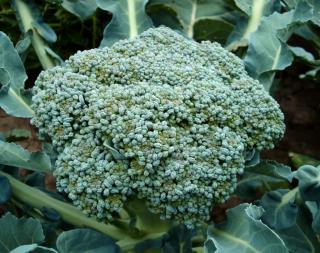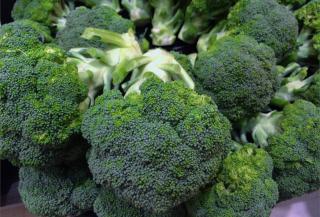

Broccoli stands out with its distinct green flower head, and is a delicious vegetable that is easy to grow.
Basic broccoli facts
Name – Brassica oleracea var. italica
Family – Brassicaceae
Type – biennial vegetable
Exposure – full sun
Soil – cool, deep, moist and rich
Harvest – all year round depending on the variety
Growing, sowing, planting and harvesting, here is how to produce magnificent broccoli cabbage.
The best way to grow broccoli is simply to sow it in soil that contains compost, manure, or some type of manure and seaweed-like conditioner. Such soil fertilizing must take place several weeks before sowing.
Before sowing, till the ground deeply to break it up well.
 If you haven’t had the time to sow your own broccoli, purchase young plants that are ready for planting.
If you haven’t had the time to sow your own broccoli, purchase young plants that are ready for planting.
If you have sown in a sheltered place, you must transplant the broccoli to their growing bed.
The first broccoli plants for sale usually appear at the end of spring, but mid-May is when planting outdoors is truly possible.
As soon as seedlings have sprouted at least 3 to 4 leaves, transplant them to their target location. Protect the seedlings if you need to plant them before the month of May.
 Transplant your broccoli seedlings spacing them 16 inches (40 cm) apart.
Transplant your broccoli seedlings spacing them 16 inches (40 cm) apart.To develop well, broccoli require regular watering to keep the soil moist.
 Broccoli are vulnerable to cold, freezing winters and must be protected over the winter when it gets too cold.
Broccoli are vulnerable to cold, freezing winters and must be protected over the winter when it gets too cold.
If winters are mild in your climate, you can leave them outdoors with a light cover such as a small plastic tunnel greenhouse.
However, if it freezes deeply in winter, you should pull out your broccoli with its clump and plant it indoors.
At the end of winter, you can transplant them back outdoors.
The main enemy of broccoli is downy mildew. Moisture is the primary factor that enables the spread of downy mildew.
Note that broccoli is also the target of aphids and, of course, caterpillars. A species that is very common (even appearing in the Americas and Australia) is a white butterfly called Pieris brassicae.
For these two parasites, avoid chemical treatments at any cost, because your vegetables and soil might retain some of the toxins.
 Broccoli is ready for harvest when the main head is well formed and still tightly bunched.
Broccoli is ready for harvest when the main head is well formed and still tightly bunched.
Broccoli brings many health benefits, for example it is laden with Vitamin C. To best take advantage of these, though, eat them raw or not too cooked.